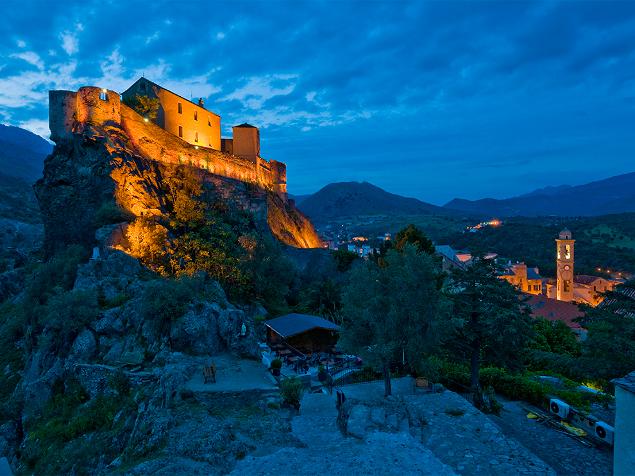
Corsica: Napoleon’s Soulful Island Home
Two
hundred years after Napoleon Bonaparte suffered his final military
defeat, Corsica, his birthplace, stubbornly resists its own cultural
Waterloo. Though this Mediterranean island has deep, historic ties to
Italy and has been part of France since 1769, its 300,000 inhabitants
retain a fierce pride in their own unique culture, including the
proverb-rich Corsican tongue. But to keep that birthright vibrant in the
face of tourism and its homogenizing effects, their battle remains
constant.
Fortunately,
most of the island’s three million annual visitors come for the
undeniable pleasures of the coast or for the thrill of visiting historic
La Maison Bonaparte, in the city of Ajaccio. All of which leaves the
island’s mountainous interior largely untouched. “Go inland and you will
find the soul of Corsica,” advises Jean-Sébastien Orsini, director of a
traditional Corsican polyphonic choir in the foothill town of
Calanzana.
Olive groves and quiet villages dot the slopes and isolated valleys of the interior, vast swaths of which are protected by the Parc Naturel Régionale de Corse, which covers more than 40 percent of the island. Hiking trails lace forests of oak and pine. In the villages here, you encounter Corsicans who still feel passionately the adage “Una lingua si cheta, un populu si more—A language is silenced, a people die.”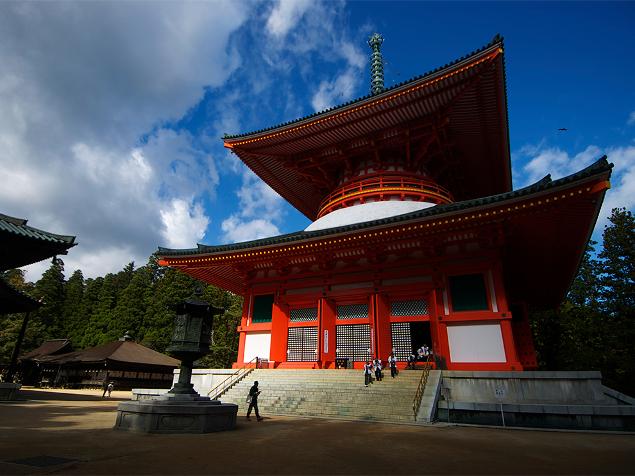
Olive groves and quiet villages dot the slopes and isolated valleys of the interior, vast swaths of which are protected by the Parc Naturel Régionale de Corse, which covers more than 40 percent of the island. Hiking trails lace forests of oak and pine. In the villages here, you encounter Corsicans who still feel passionately the adage “Una lingua si cheta, un populu si more—A language is silenced, a people die.”

Koyasan, Japan: Let There Be Enlightenment
The
austere heart of Japanese Buddhism beats loudly at Koyasan, a monastic
complex that lies two hours by train south of Osaka. Koyasan marks its
1,200th anniversary in 2015.
Established by revered scholar-monk Kobo Daishi in 816 as the headquarters for his Shingon school of Esoteric Buddhism, Koyasan remains one of Japan’s most pristine and sacred sites, manifesting a masculine side of Japan worlds away from the hostesses and Hello Kittys of Kyoto.
Established by revered scholar-monk Kobo Daishi in 816 as the headquarters for his Shingon school of Esoteric Buddhism, Koyasan remains one of Japan’s most pristine and sacred sites, manifesting a masculine side of Japan worlds away from the hostesses and Hello Kittys of Kyoto.
“Koyasan
is purity,” says a monk after a crack-of-dawn fire ceremony, where a
priest burns wooden wish-tablets to the boom of a taiko drum and the
sprinkling of herbs and oils on high-leaping flames. Staying in one of
the temples that welcome guests here opens a portal onto everyday
monastic life. Waking to enshrouding mists, visitors are invited to join
morning chants swirled by cymbals, gongs, and incense. At night,
no-nonsense monks who began the day hand-scrubbing wooden hallways
roughly plop vegetarian feasts in front of visitors.
Kobo Daishi is believed to live here still, sitting in eternal meditation in an elaborate mausoleum, and through the centuries, Japan’s most rich and powerful have built palatial sepulchers here as well. At night, a ghostly lantern-lit trail winds among the moss-covered stones deep into the mystery and majesty of ancient Japan. —Don George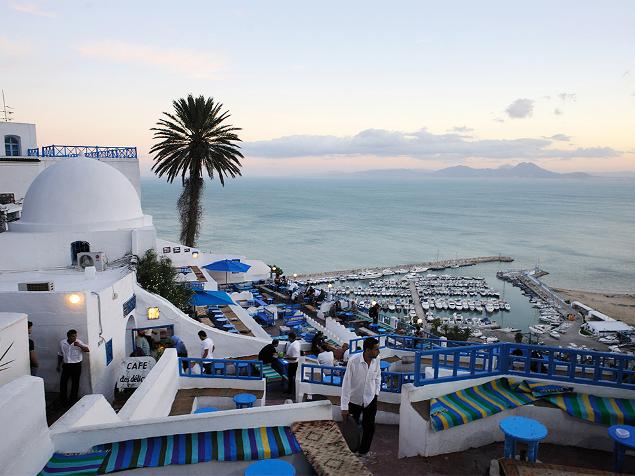
Kobo Daishi is believed to live here still, sitting in eternal meditation in an elaborate mausoleum, and through the centuries, Japan’s most rich and powerful have built palatial sepulchers here as well. At night, a ghostly lantern-lit trail winds among the moss-covered stones deep into the mystery and majesty of ancient Japan. —Don George

Tunis, Tunisia: New Day in North Africa
Byrsa
Hill, in Tunis’s upmarket suburb of Carthage, makes a dizzying aerie to
watch the sun set into the bay. The vantage point might be the Light
Bar at the decidedly 21st-century Villa Didon, but Phoenician streets
lay deep beneath and, down on the waters’ edge, the scalloped foreshore
traces a Roman naval port. Inland, the coils of the ancient medina and
the colonial grid of the early 20th century French city tell other
chapters of Tunis’s story of conquest, resistance, flux, and
assimilation, from mythic Dido to the Jasmine Revolution of 2011.
The
city’s layered charms are something that many pre-revolution visitors
missed entirely, on their way to the Sahara or the Mediterranean beach
resorts of Hammamet and Sousse. These sun-holiday tribes all but
abandoned Tunisia after 2011, but with a relaxation of most travel
warnings to the country, a new breed of traveler has replaced them. They
come to discover Tunis’s past, yes, and now also its cultural energy,
what Ahmed Loubiri, the organizer of international electronic music
festival Ephemere, sees as a widespread “urge to be creative.” Loubiri
says this ranges from “random jam sessions in garages and coffee shops
to humongous festivals.” Galleries such as Selma Feriani and Hope
Contemporary continue to thrive in the neighborhoods of La Marsa and
Sidi Bou Said, and Tunis’s antiquities museum, the Bardo, has reopened
with an ambitious new wing.
“It’s a Tunisian habit to know how to receive guests. We get back as much as we give,” says Marouane ben Miled, who runs La Chambre Bleue, a medina B&B, suggesting that this fresh popularity might also mark the beginning of a fertile conversation.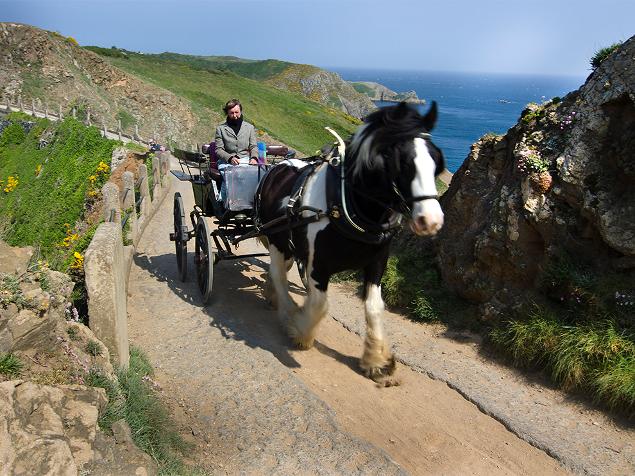
“It’s a Tunisian habit to know how to receive guests. We get back as much as we give,” says Marouane ben Miled, who runs La Chambre Bleue, a medina B&B, suggesting that this fresh popularity might also mark the beginning of a fertile conversation.

Sark, Channel Islands: Tradition’s Last Stand
In
Sark, time flows like molasses. Sarkees will mark the 450th anniversary
of feudalism in 2015; the tiny Channel Island off the coast of Normandy
abolished the medieval form of governance in 2008. But old ways linger:
The two banks have no ATMs; the unpaved roads lack street lights; cars
are banned. Signposts usefully give distances in walking minutes, for in
this unhurried place ambling is what one does—or cycling, or riding in a
horse-drawn carriage. Wander country roads bordered by fieldstone walls
and storybook cottages, past foxgloves and bluebells and 600 other
kinds of wildflowers, taking note of butterflies, seabirds, Guernsey
cows. Destination? Perhaps the sea caves of Gouliot Headland, to find
anemones. Or La Marguerite Cottage, to buy duck eggs from Sue Adams’s
streetside honor box. Or Venus Pool, for a swim at low-tide. Or
especially La Coupee, to walk the skinny track atop an isthmus 300 feet
above the sea.
A visitor’s daytime choices abound. But late at night, there’s just one: the sky. Sark is the first island certified by the International Dark-Sky Association. Time may have swept feudalism aside. The stars are timeless. — Peter Johansen
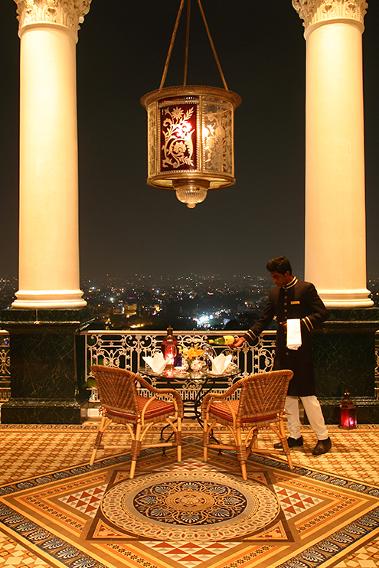
A good Muslim ruler was expected to be an expert with the pen as well as the sword; the city’s founder, Mohammed Quli Qutb Shah, is credited with the first published anthology of Urdu poetry. The later ruling dynasty, the Nizams, provided patronage to poets within their court. Attend a mushaira (poetry symposium) for a good introduction to the city’s literary legacy. There’s also the Hyderabad Literary Festival in January, followed by February’s Deccan Festival, during which the most passionate performances involve qawwali, an 800-year-old form of Sufi music. Another evocative setting to witness qawwali is Chowmahalla Palace, the recently restored residence of the Nizams. “Dakhan—Hyderabad—is the diamond, the world is the ring,” says historian Narendra Luther, quoting the court poet Mulla Vajahi. “The ring’s splendor lies in the diamond.” —Simar Preet Kaur
A visitor’s daytime choices abound. But late at night, there’s just one: the sky. Sark is the first island certified by the International Dark-Sky Association. Time may have swept feudalism aside. The stars are timeless. — Peter Johansen

Hyderabad, India: A Diamond Is Forever
Stories
of Hyderabad’s poetic past weave amid strings of programming code in
this southeastern India city that was home to one of the richest men in
the world, Mir Osman Ali Khan, the last ruling nizam of Hyderabad. Now a
seedbed for many global IT brands, Cyberabad (as it’s dubbed) is where
you can hear the muezzin’s call above the traffic din generated by aging
Urdu scholars and young software engineers alike. Here, ancient
boulders guard the peripheries of HITEC City, while new rooftop bars hem
in lakes and gardens. The opulent Taj Falaknuma Palace hotel perches
atop a hill overlooking the Old City, where Irani cafés thrive alongside
fifth-generation pearl merchants and the finest fountain pen makers.
Prone to exaggeration, the Hyderabadis’ conversations within these cafés
often linger over three cups of chai and four hours.
A good Muslim ruler was expected to be an expert with the pen as well as the sword; the city’s founder, Mohammed Quli Qutb Shah, is credited with the first published anthology of Urdu poetry. The later ruling dynasty, the Nizams, provided patronage to poets within their court. Attend a mushaira (poetry symposium) for a good introduction to the city’s literary legacy. There’s also the Hyderabad Literary Festival in January, followed by February’s Deccan Festival, during which the most passionate performances involve qawwali, an 800-year-old form of Sufi music. Another evocative setting to witness qawwali is Chowmahalla Palace, the recently restored residence of the Nizams. “Dakhan—Hyderabad—is the diamond, the world is the ring,” says historian Narendra Luther, quoting the court poet Mulla Vajahi. “The ring’s splendor lies in the diamond.” —Simar Preet Kaur